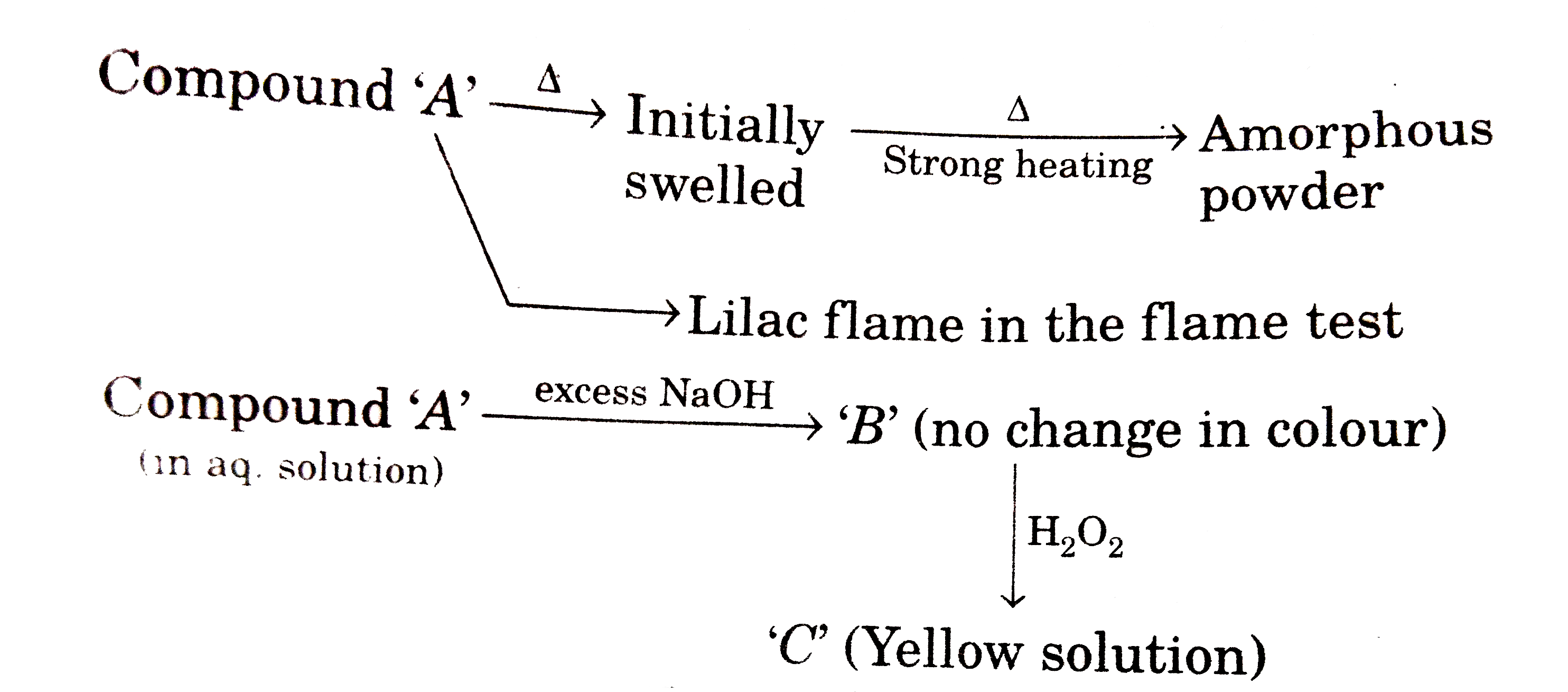Discuss the pattern of variation in the oxidation states of (a) and (b) .
Video Solution
Text Solution
(i) B to TI
The electric configuration of group 13 elements is . Therefore, the most common oxidation state exhibited by them should be +3. However, it is only boron and aluminium which practically show the +3 oxidation state. The remaining elements, i.e., Ga, In, Tl, show both the +1 and +3 oxidation states. On moving down the group, the +1 state bocmes more stable. For example, Tl (+1) is more stable than Tl(+3). This is because of the inert pair effect. The two electrons present in the s-shell are strongly attracted by the nucleus and do not participate in bonding. This inert effect becomes more and more prominent on moving down the group. Hence, Ga (+1) is unstable, In (+1) is fairly stable, and Tl (+1) is very stable.
The stability of the +3 oxidation state decreases on moving down the group.
(ii) C to Pb
The electronic configuration of group 14 elements is . Therefore, the most common oxidation state exhibited by them should be +4. However, the +2 oxidation state becomes more and more common on moving down the group. C and Si mostly show the +4 state. On moving down the group, the higher oxidation state becomes less stable. This is because of the inert pair effect. Thus, although Ge, Sn, and Pb show both the +2 and +4 states, the stability of the lower oxidation state increases and that of the higher oxidation state decreases on moving down the group.
|
Updated on:21/07/2023
Related Playlists
Knowledge Check
- Question 1 - Select One
The common oxidation states of Ti are
A+2,+3,+4B+2,+3C+3,+4D+3,−4 - Question 1 - Select One
The common oxidation states of Ti are
A+2, +3B+3, +4C-3, -4D+2, +3, +4 - Question 1 - Select One
Predict the highest and lowest oxidation state of (a) Ti and (b) Tl
Aa[0,+3]b[0,+2]Ba[+3,0]b[+4,0]Ca[+4,0]b[+4,0]Da[+4,+2]b[+3,+1] - Question 1 - Select One

The compound 'B' is having oxidation state of:AzeroBIICIIIDIV - Question 1 - Select One
What is the oxidation state of osmium in 7B and 7C, respectively ?
 A6,8B8,6C6,6D8,8
A6,8B8,6C6,6D8,8
Similar Questions
Discuss the pattern of variation in the oxidation states of (a)B→TI and (b) C→Pb.
View SolutionAmong the following elements, what is the total number of elements having the lowest oxidation state of zero?
Ta<br>b.Te<br>c.Tc<br>d.Ti<br>e.TIView SolutionAccount for the variation of acidic character with increases in the oxidation state of central atom
View SolutionName the following:
(a) A transition metal which does not exhibit variation in oxidation state in its compounds.
(b) A compound where the transition metal is the +7 oxidation state.
(c) A member of the lanthanoid series which is well known to exhibit +4 oxidation state.
(d) Ore used in the preparation of Potassium dichromate.View SolutionPredict the maximum and minimum oxidation states for (i) Cl (ii) Ti
View Solution

